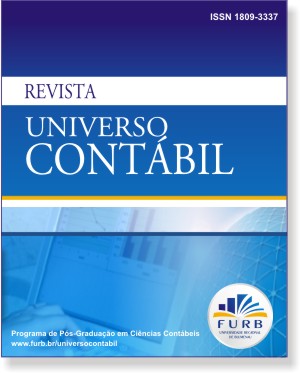DETERMINANTS OF THE DEFERRED TAX ASSETS RECOGNITION
DOI:
https://doi.org/10.4270/ruc.20106Keywords:
Deferred tax assets. Recognition. Results management.Abstract
This paper aims to identify factors that may explain the recognition level of Deferred Tax Assets (DTAs). Although CVM Statement n° 273/98 establishes criteria for recognition and account of those assets, there are possibilities, inside those criteria, of recognizing those assets in bigger or smaller rank, with consequences in companies' patrimony composition and results. This is a descriptive and explanatory research, with a quantitative approach. The financial statements of a sample of 29 companies listed in the São Paulo Stock Exchange (Bovespa) in the period from 2003 to 2008 were analyzed. Initially, it was examined whether these companies complied with the CVM statement regarding the recognition of deferred tax assets and then an index of DTAs based on data from the financial statements was created. This index was correlated with a series of explanatory accounting variables that can explain the different levels of recognition. The findings indicated that, although the companies comply with the mentioned securities commission (CVM) statement n° 273/98, there is an adjustment process in the deferred tax assets recognition levels throughout the time, resultant of a movement in the past which are not dependent of the present results. However, they were relevant in explaining the variability in the DTAs recognition, with a significance level of 1%, the Indebtedness, the General Marketability, the Profitability and the Size of the companies. These results aim at the opportunistic utilization of the margins facilitated by accountancy statements, looking for economic and financial indicators improvement through Deferred Tax Assets.
Downloads
Downloads
Published
How to Cite
Issue
Section
License
The copyright for papers published in this journal belong to the author, with rights of first publication for the journal. As the papers appears in this publicly accessed journal, the papers are for free use, receiving their credit, in educational and non-commercial uses. The journal will allow the use of the papers published for non-commercial purposes, including the right to send the paper to publicly accessed databases.


